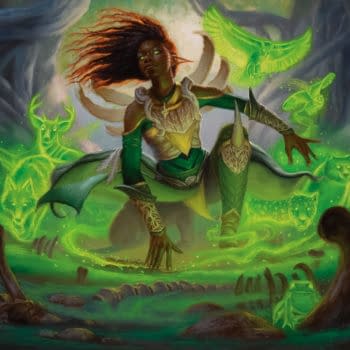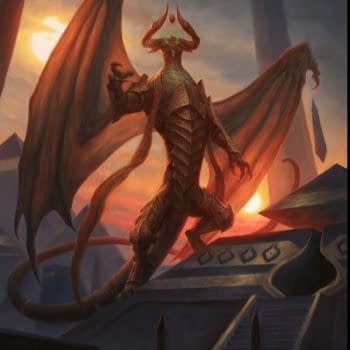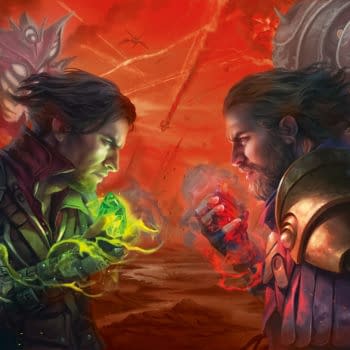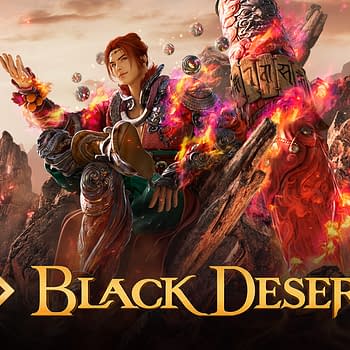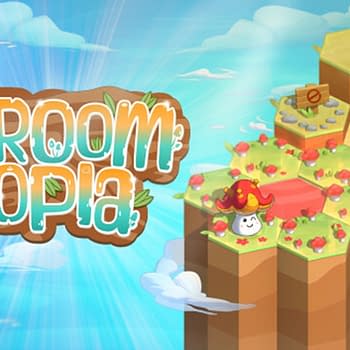Posted in: Card Games, Games, Magic: The Gathering, Tabletop, Wizards of the Coast | Tagged: Archenemy, magic, MTG, Scheme, TCG, WotC
Magic: The Gathering: Archenemy, Pt. 13: Roots, Rot, & Thought
Hello and welcome back, all players, collectors, and other fans of Magic: The Gathering, the premier collectible trading card game designed, developed, and published by Wizards of the Coast! In this installment of our series on the cards from Archenemy, the 3-on-1 supplemental multiplayer format that has one player acting as a Big Bad Evil Guy (or Gal, or whatever else you may prefer), we admit we may have gone a little off the deep end of the pool. Let's face it; fifteen articles on one supplemental release is a lot of work, even weekly, and to commit to it this long has taken a lot of fortitude. However, we're not about to let that stop us! Let's dive into the analysis explanations.

The justification behind our ratings for the scheme cards of the Archenemy format as a whole is simple:
All Schemes will be grouped according to the overall role they play: These groupings are categorized as such:
Disruption: The Schemes take something from your opponents (and only them) that doesn't exist on the battlefield. This could be cards in hand, life, or choices like the ability to attack or cast spells.
Global: These Schemes impact each player with less disparity than the other Schemes in the game. Usually there will be an even effect for each player including the archenemy and/or their opponents, for a certain duration or instantaneously.
Removal: These Schemes remove opponents' permanents from the battlefield. These are rather self-explanatory, but could include the need for an opponent to make a tough decision.
Tempo: These Schemes give you as the Archenemy (and only you) some sort of expedited value, such as ramp, cards drawn, or even an extra turn, to name a few examples.
Value: These Schemes give you as the Archenemy (and only you) something such as tokens or cards put onto the battlefield, to name a few resources potentially granted this way. This does not include resources such as sources of mana or drawn cards, however.Next, the Schemes will be grouped further on a scale of 1-10 in terms of how well they do their job in the role provided, with 1 being rather underpowered and 10 being broken.
(For example, All In Good Time is a 9/10 for a Tempo Scheme, while Approach My Molten Realm is a 3/10 for a Global Scheme.)
If that was loud and clear for you, let's analyze some scheme cards!
#37. Roots of All Evil
Roots of All Evil (Value, 6/10) is a very straightforward scheme not very unlike Look Skyward and Despair or The Iron Guardian Stirs. The differences begin at a quantitative level – what Roots of All Evil lacks in sizable creatures, it makes up in the sheer mass of creatures it makes. However, the differences ultimately end there, and when it comes right down to it, it's a rather unexciting scheme to set into motion. Mind you, you can always make use of a Skullclamp or a sacrifice engine with this scheme and get some reasonable value from that, but if you're running those kinds of cards your deck was already aiming to do so.
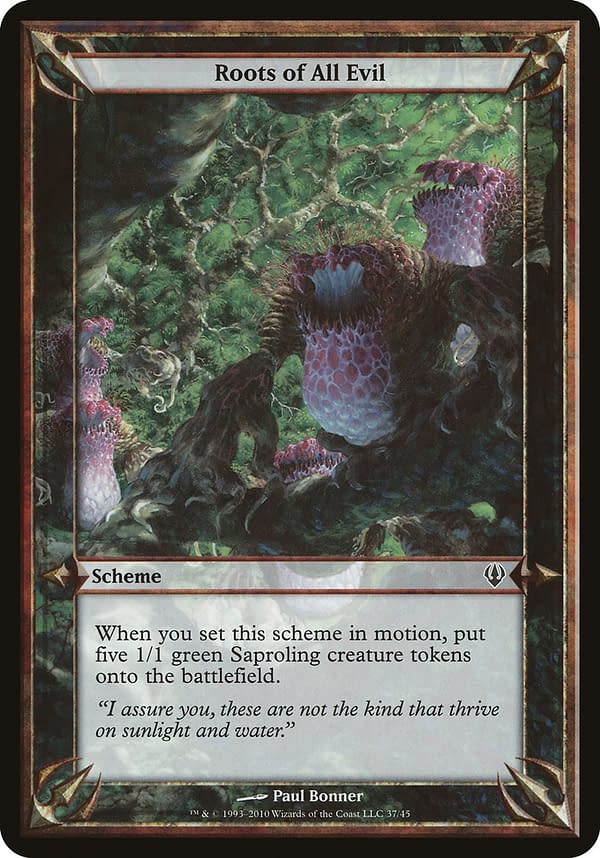
#38. Rotted Ones, Lay Siege
Rotted Ones, Lay Siege (Value, 2/10) is another token-generating Value scheme, but this one is arguably even worse than Roots of All Evil. While Roots of All Evil makes one less power worth of creatures, it makes more of them and none that are obligated to attack each combat if able. What makes Rotted Ones, Lay Siege so much worse is that forced attack issue. To be honest, it makes any card (oversized and supplemental or not) worse to strip its owner of the choice to do, or not to do, something with that card. So this one is a scheme that we will absolutely pass on. Oh well, at least it's free token generation?
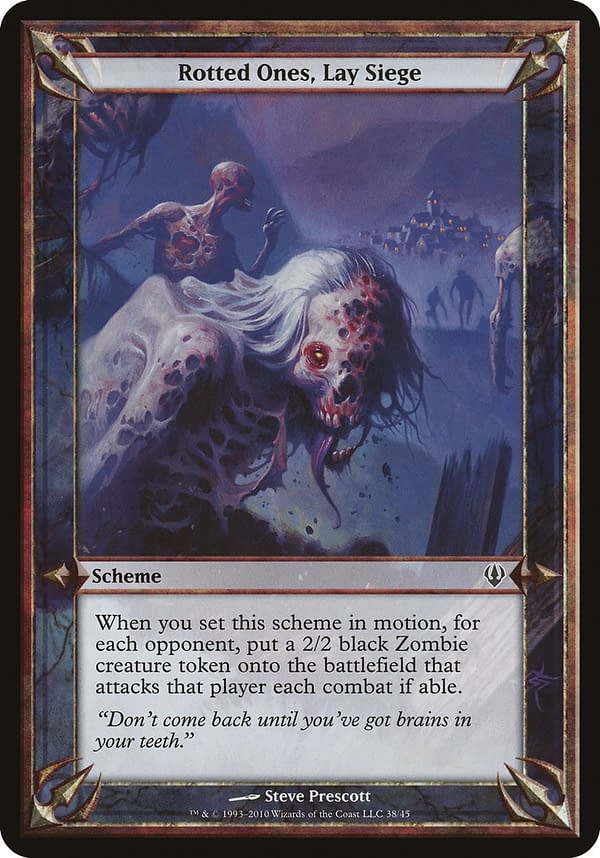
#39. Surrender Your Thoughts
Surrender Your Thoughts (Disruption, 3/10) is another "self vs. others"-style scheme. This one deals in discarding cards from either each other opponent's hand in small but equal measure, or from the deciding player's hand in slightly larger measure. The issue with this scheme is that it is in no way impactful for the Archenemy to set into motion, as like with all "self vs. others" schemes, the opposition is the only one with a say in the results, and they can work together as a team to answer the dilemma. While four cards versus two-and-two cards is equal in terms of discard, what Wizards of the Coast probably should have looked at was the impact of selfishness in these games among the teams, and worked this accordingly. What I mean by that is having one player either discard their entire hand (or perhaps all but a set number of cards), or have that player make every other player discard as many as they would have discarded. This would give the Archenemy the wherewithal to cause the opponent with the most cards in hand to make a very tough decision. But I'm getting ahead of myself here. That card wasn't printed, and the one that was is not nearly good enough to warrant inclusion in a scheme deck barring dedicated discard decks.
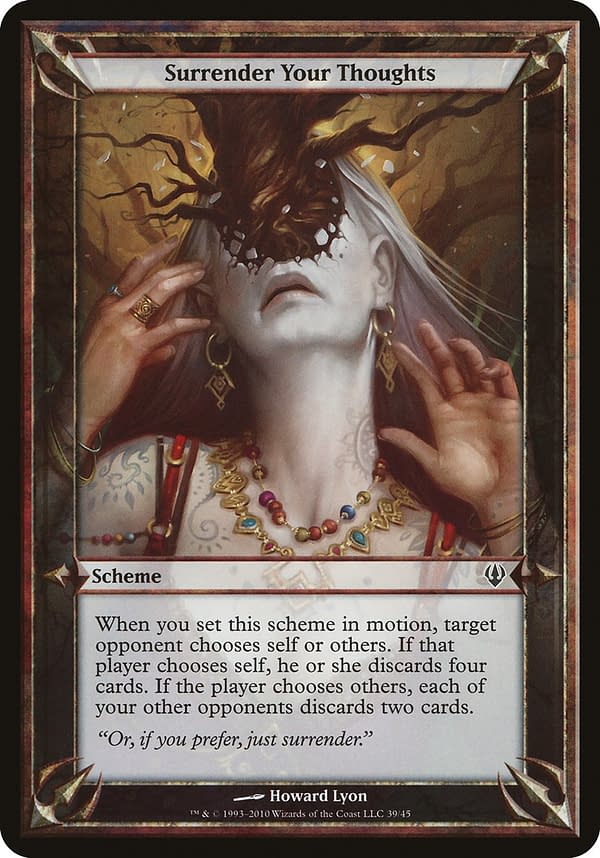
What do you think about Magic: The Gathering and the Archenemy format? Have you ever played the game with this set of supplemental rules? Do you want there to be a comeback for this format? Let us know your thoughts and opinions in the comments below!





